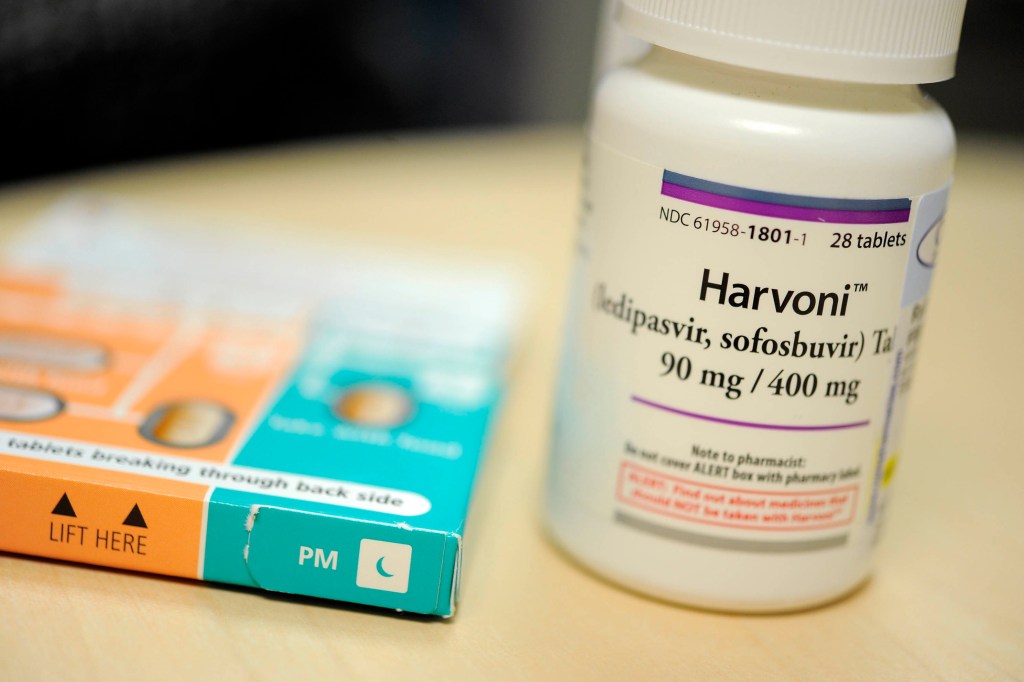Rick Jaenisch went through treatment six times before his hepatitis C was cured in 2017. Each time his doctors recommended a different combination of drugs, his insurer denied the initial request before eventually approving it. This sometimes delayed his care for months, even after he developed end-stage liver disease and was awaiting a liver transplant.
“At that point, treatment should be very easy to access,” said Jaenisch, now 37 and the director of outreach and education at Open Biopharma Research and Training Institute, a nonprofit group in Carlsbad, California. “I’m the person that treatment should be ideal for.”
But it was never easy. Jaenisch was diagnosed in 1999 at age 12, after his dad took him to a San Diego hospital because Jaenisch showed him that his urine was brown, a sign there was blood in it. Doctors determined that he likely got the disease at birth from his mom, a former dental surgical assistant who learned she had the virus only after her son’s diagnosis.
People infected with the viral disease, which is typically passed through blood contact, are often outwardly fine for years. An estimated 40% of the more than 2 million people in the U.S. who are infected don’t even know they have it, while the virus may quietly be damaging their liver, causing scarring, liver failure, or liver cancer.
With several highly effective, lower-cost treatments now on the market, one might expect that nearly everyone who knows they have hepatitis C would get cured. But a study from the Centers for Disease Control and Prevention published in June found that is far from the case. A proposal by the Biden administration to eliminate the disease in five years aims to change that.
Overall, the agency’s analysis found, during the decade after the introduction of the new antiviral treatments, only about a third of the people with an initial hepatitis C diagnosis cleared the virus, either through treatment or the virus resolving on its own. Most infected people had health insurance of some kind, whether Medicare, Medicaid, or commercial coverage. But even among commercially insured patients, who were most likely to receive treatment, only half of those age 60 or older had viral clearance by the end of the study period in 2022.
“Unlike HIV, where you have it for the rest of your life, with hepatitis C it’s a very short time frame, just eight to 12 weeks, and you’re cured,” said Carl Schmid, executive director of the HIV+Hepatitis Policy Institute. “So why aren’t we doing a better job?”
Experts point to several roadblocks that infected people encounter. When the new treatments were introduced, cost was a huge factor. Private plans and state Medicaid programs limited spending on the pricey drugs by making them tougher to get, imposing prior authorization requirements, restricting access to people whose livers were already damaged, or requiring patients to abstain from drug use to qualify, among other restrictions.
By the time Jaenisch’s case was cured at age 31, the landscape of hepatitis C treatment had changed dramatically. A groundbreaking, once-a-day pill was introduced in 2013, replacing a grueling regimen of weekly interferon injections that had uncertain success rates and punishing side effects. The first of these “direct-acting antivirals” treated the disease in eight to 12 weeks, with few side effects and cure rates exceeding 95%. As more drugs were approved, the initial eye-popping $84,000 price tag for a course of treatment has gradually dropped to about $20,000.
As drug prices have declined, and under pressure from advocates and public health experts, many states have eliminated some of those barriers that have made it difficult to get approved for treatment.
Still more barriers exist that have little to do with the price of the drug.
Ronni Marks, a former hepatitis C patient, advocates for patients who often fall through the cracks. These include rural residents and those who are uninsured, transgender people, or injection drug users. An estimated 13% of people who pass through U.S. jails and prisons each year have a chronic hepatitis C infection, but access to care there is scant.
Marks said that many disadvantaged people need help getting services. “In many cases they have no way to travel, or they’re not in a situation where they can get to testing,” she said.
Unlike the federal Ryan White HIV/AIDS Program, which for more than 30 years has provided grants to cities, states, and community-based groups to provide medication, treatment, and follow-up care for people with HIV, there’s no coordinated, comprehensive program for patients with hepatitis C.
“In a perfect world, that would have been a good model to replicate,” said Sonia Canzater, the senior project director of the infectious diseases initiative at Georgetown’s O’Neill Institute for National and Global Health Law. “That’s probably never going to happen. The closest thing we can hope for is this national plan, to systemically provide access so that people aren’t beholden to the policies in their states.”
The national plan Canzater is referring to is a $12.3 billion, five-year initiative to eliminate hepatitis C that was included in President Joe Biden’s fiscal year 2024 budget proposal. Former National Institutes of Health director Francis Collins is spearheading the initiative for the Biden administration.
The program would:
- Speed up the approval of point-of-care diagnostic tests, allowing patients to be screened and begin treatment in a single visit, rather than the current multistep process.
- Improve access to medications for vulnerable groups such as people who are uninsured, incarcerated, part of the Medicaid program, or members of American Indian and Alaska Native populations by using a subscription model. Known as the Netflix model, this approach enables the government to negotiate a set fee with drug companies that would cover treatment for all the individuals in those groups that need it.
- Build the public health infrastructure to educate, identify, and treat people who have hepatitis C, including supporting universal screening; expanded testing, provider training, and additional support for care coordination; and linking people to services.
“This is both about compassion and good financial sense,” Collins said, pointing to an analysis by Harvard researchers projecting that the program would avert 24,000 deaths and save $18.1 billion in health spending over 10 years.
Collins said legislation to implement the Biden plan, currently in draft form, was expected to be introduced now that Congress has reconvened after its summer recess. The Congressional Budget Office has not yet estimated its cost.
Until covid-19 burst on the scene in 2020, hepatitis C had the dubious distinction of killing more Americans annually — nearly 20,000 — than any other infectious disease. Advocates are pleased that the virus is finally getting the attention they believe it deserves. Still, they are not confident that Congress will support providing more than $5 billion in new funding for it. The rest would come in the form of savings from existing programs. But, they said, it’s a step in the right direction.
“I’m thrilled” that there is a federal proposal to end hepatitis C, said Lorren Sandt, executive director of the Caring Ambassadors, a nonprofit in Oregon City, Oregon, that helps people manage chronic diseases such as hepatitis C. “I’ve cried so many times in joy since that came out.”
KFF Health News is a national newsroom that produces in-depth journalism about health issues and is one of the core operating programs at KFF—an independent source of health policy research, polling, and journalism. Learn more about KFF.
USE OUR CONTENT
This story can be republished for free (details).











